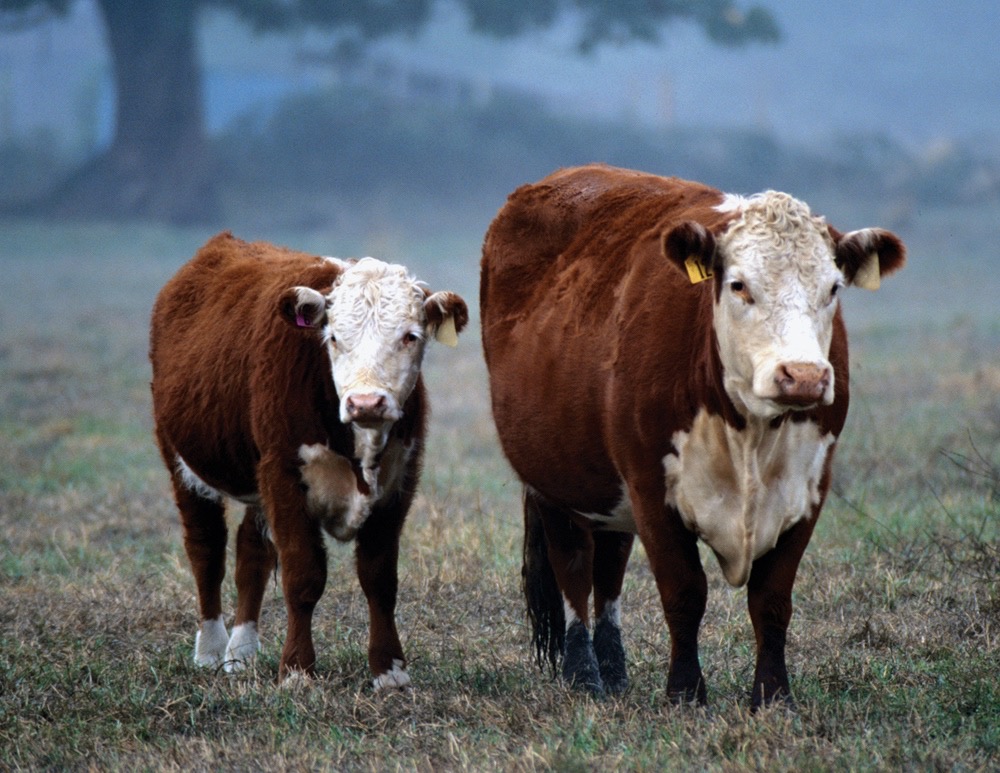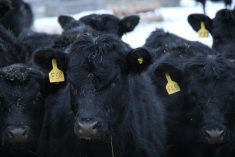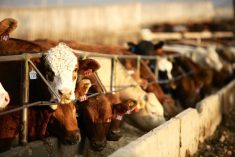Checkoff refunds continue to hobble Alberta Beef Producers, which had to give back $2.5 million in the past year, mainly to cattle feeders.
“The $2 service charge that we have here would be sufficient if we were able to invest it all, but we lose about a third of it,” said Rich Smith, the organization’s executive director.
“These are issues that hurt the competitiveness of the industry. It’s a substantial amount of money that we think could be invested in a wide range of industry initiatives that would address marketing and research.”
That not only impacts Alberta producers but also affects their ability to keep up with their counterparts in other countries, said chair Greg Bowie, who ranches near Ponoka.
“The nations that we compete with are doing a better job of finding dollars to put into their research and promotion,” he said. “We have to come up with some way to commit funding to those areas.”
The checkoff rebates reduced the organization’s reserve funds and prevented it from funding multi-year research projects, he added.
“We can’t commit to a five-year project, when we have no idea what the refund rates are going to be five years down the road,” said Bowie. “We’ve got everything so tight that we don’t have the reserve funds to set aside. Six or seven years ago, we set aside $1.5 million for feed grain research. We don’t have that option today.”
Fewer dollars have been allocated this year for research (most of which goes through other groups), although it is working with the Alberta Livestock and Meat Agency to fund forage research and has also contributed money for work in feed grains and the beef science cluster.
“We’ve worked hard to get a greater degree of leverage with our research dollars,” said Smith. “The other thing that we’re able to do that many research funders aren’t able to is provide funding for research infrastructure.”
Read Also

Grazing ‘sweet spot’ boosts pasture performance
Timing-focused approach to pasture management touted to boost forage growth, livestock gains while also cutting farmer labour and inputs
Cutting costs
Cutbacks have become the order of the day. The organization had a $754,000 deficit in the 2013-14 fiscal year, but managed to post a $49,905 surplus in the 2014-15 fiscal year (which ended March 31).
Part of that came from trimming administrative costs.
“We’ve been adjusting for five years to the situation of having reduced revenue, so we’ve been really careful with our staffing, always looking to gain efficiency,” said Smith.
This year’s budget is $4.9 million, and allocates money to trade advocacy and operating reserves.
“As far as trimming anything more, we’re as lean as we could possibly get,” said Bowie.
But the surplus is not a signal that the organization has turned a fiscal corner, but a function of how cash flows to long-term projects.
“The year-to-year position with respect to excess or deficit is mostly related to what has happened with the money we’ve set aside in past years, rather than reflecting substantial changes in revenue and expenses of that particular year,” said Smith. “It’s a valid accounting procedure, but is not an accurate reflection of our overall financial position because so much of it is related to previous decisions.”
Future prospects
But while balancing the books is critical, there are bigger issues, particularly finding more research funding and addressing the low cattle herd numbers.
In its Grassroots newsletter earlier this month, Alberta Beef Producers called the latest decline of cattle numbers “a disturbing trend for the Canadian market.”
While U.S. numbers increased 1.4 per cent, the Canadian herd fell by 2.5 per cent.
“The percentages are one thing, but the actual numbers are something else,” the newsletter stated.
“Beef cows and breeding heifers are the basic foundation of the herd as production originates here. Canadian cow numbers went from 3.9 million decreasing to 3.82 million or a drop of 78,900 head. For the U.S., cows went from 29 million to 29.7 million or more specifically an increase of 608,000.”
The report also noted the number of Canadian breeding heifers fell by 8,000 (to 531,100 head) while American numbers jumped by 226,100 (to 5.78 million head). There is a mix of factors behind this — including the country-of-origin labelling law and producers cashing in on high prices — but “from a positive standpoint, refining cow herd production programs such as pasture/forage and health management can show a considerable amount of payback,” the newsletter states.
Their members also said they want to see more funding for the organization and backed a non-refundable checkoff during a planning review last summer and at producer meetings in the fall, said Smith.
“Producers are saying that we need to take a look at how we address this loss of revenue through refunds, and we’re looking at different strategies for doing that,” said Smith.
The organization will be talking to government and industry partners on how to address the situation, but “we don’t have anything firmly in place yet,” he added.
Any additional money from a provincial levy, a lower refund rate, or a non-refundable checkoff would go to research and marketing, as well as industry collaboration, he said.


















